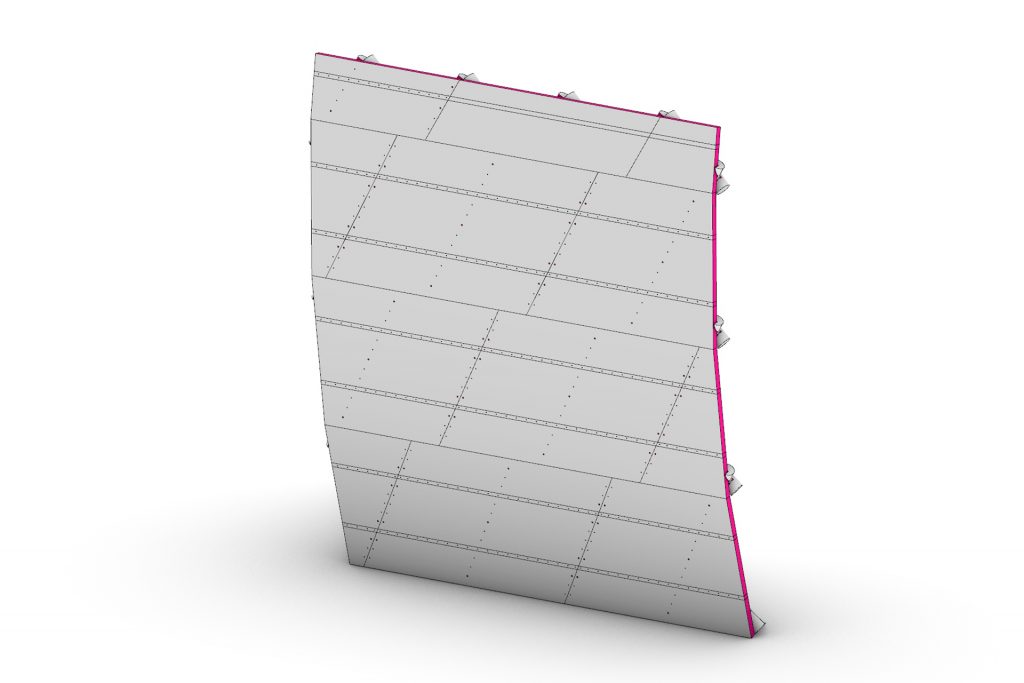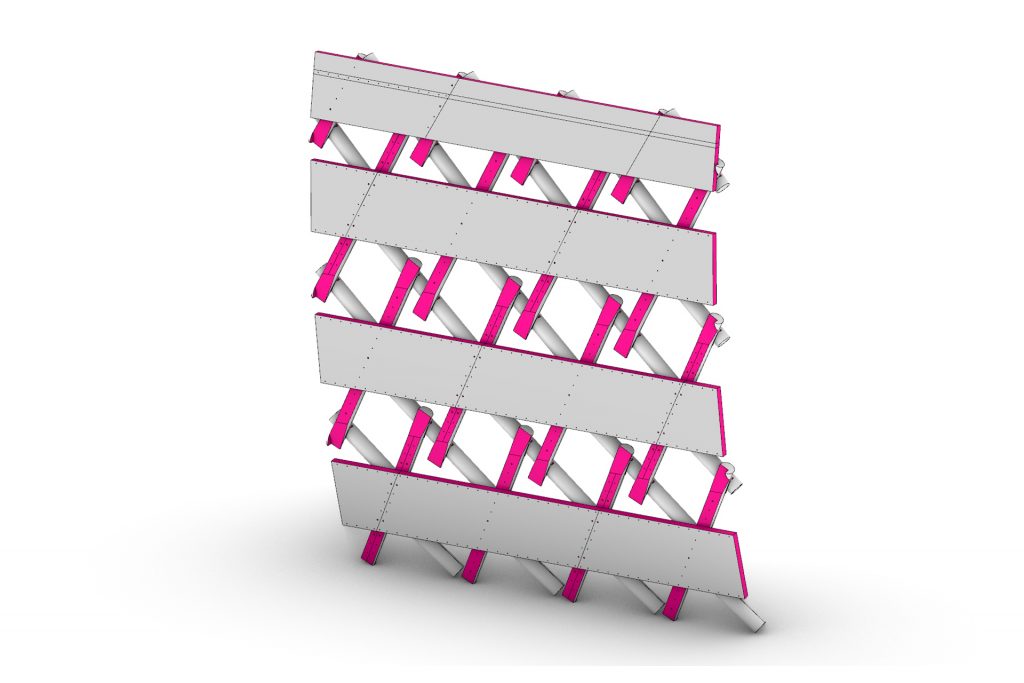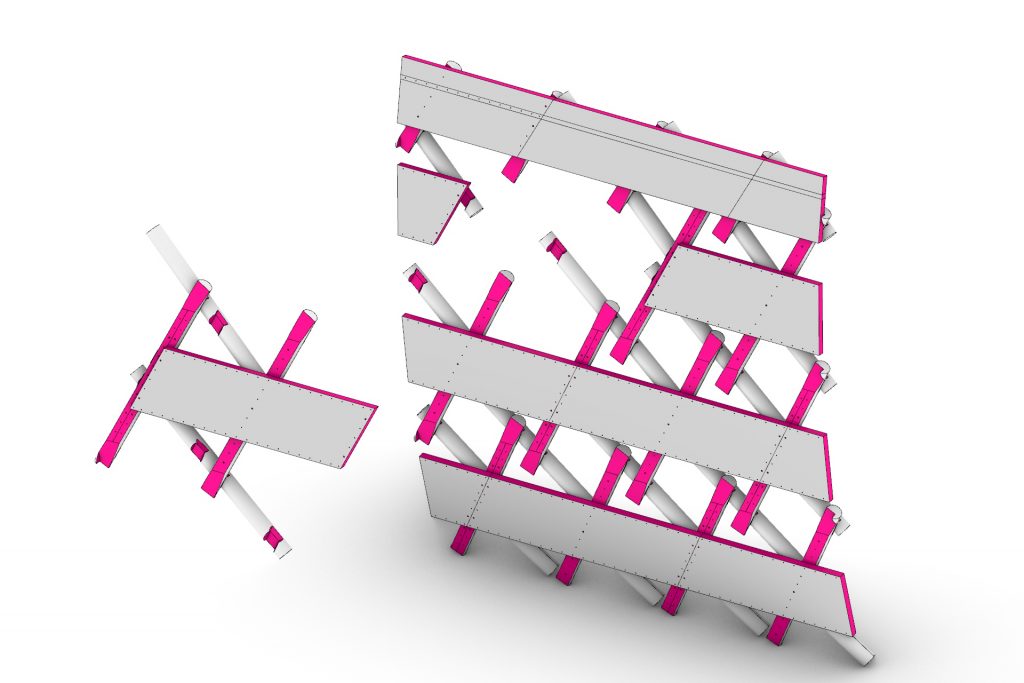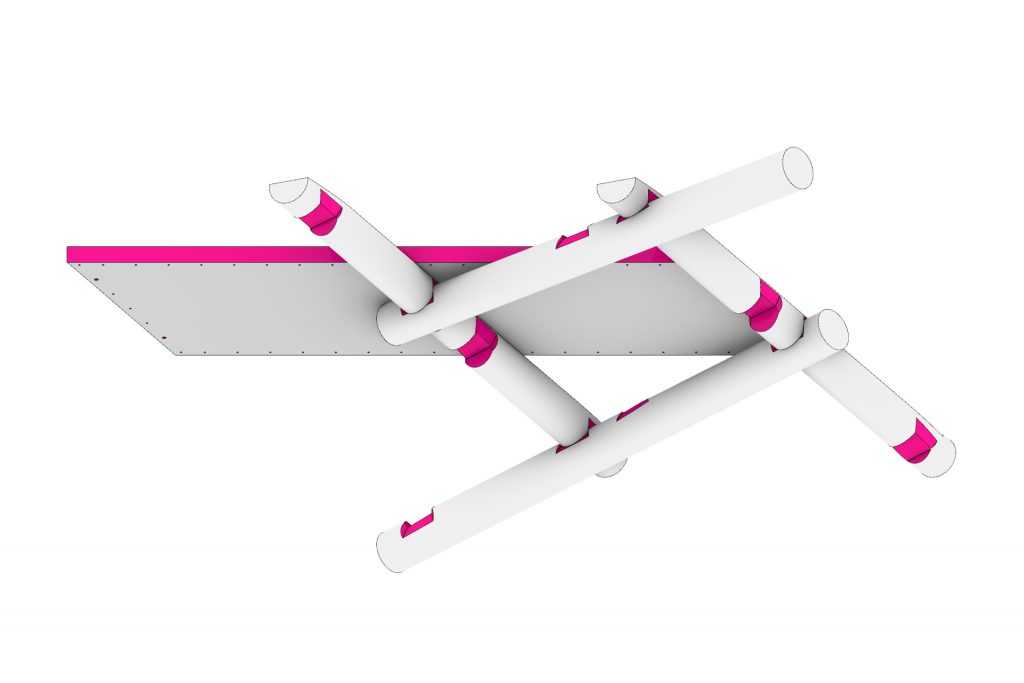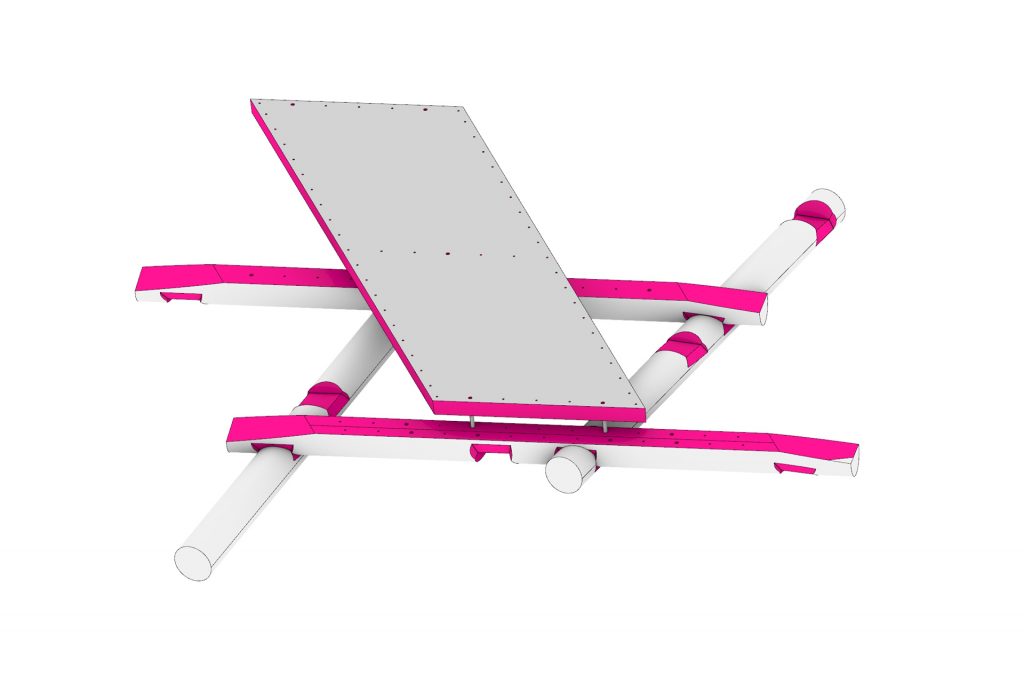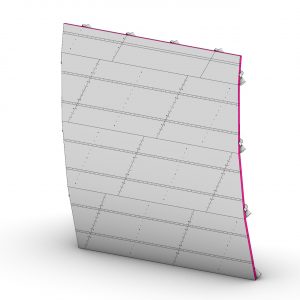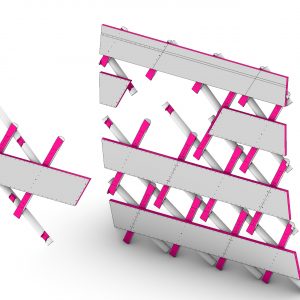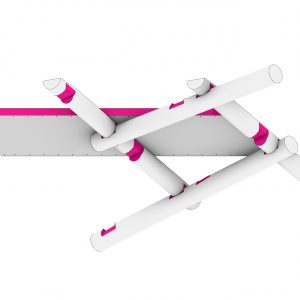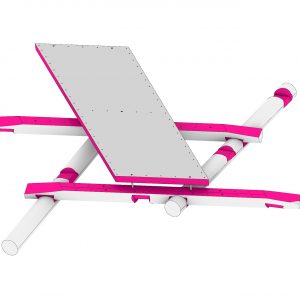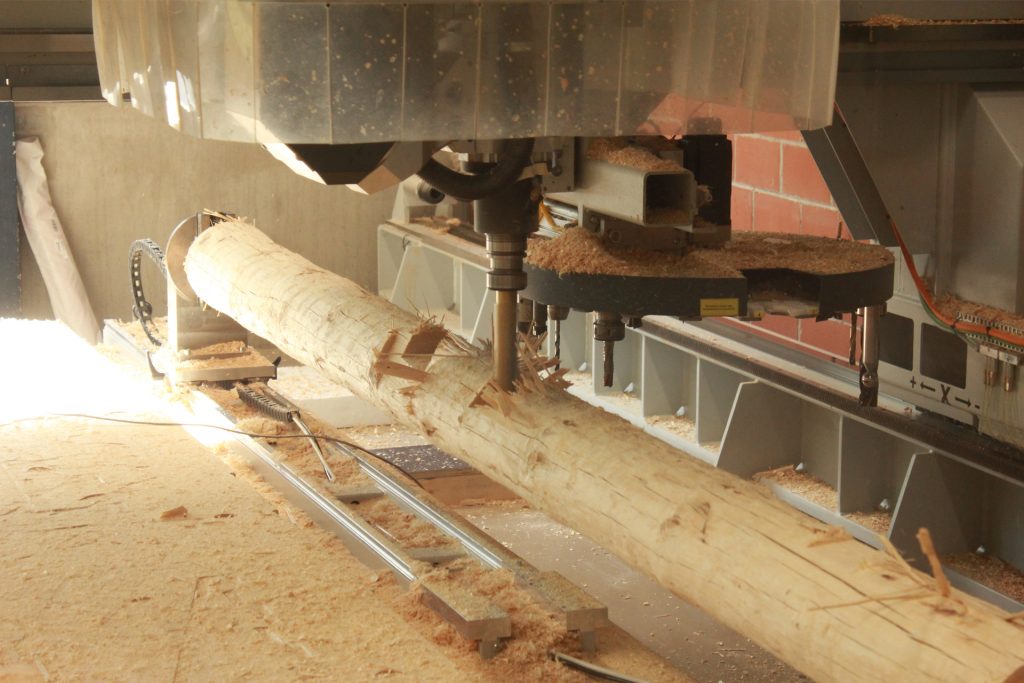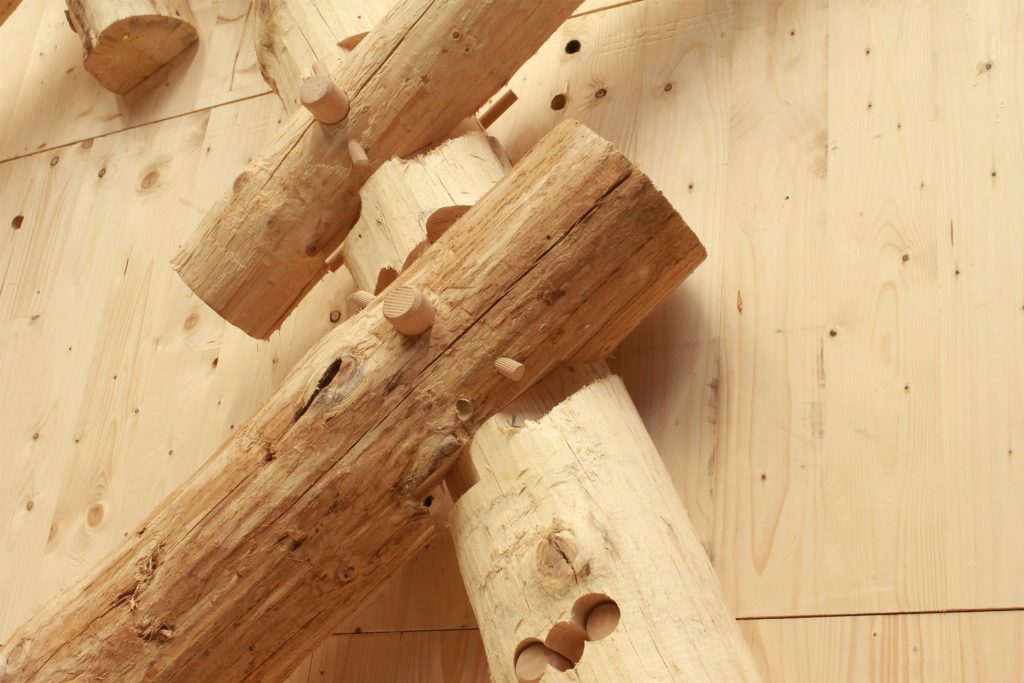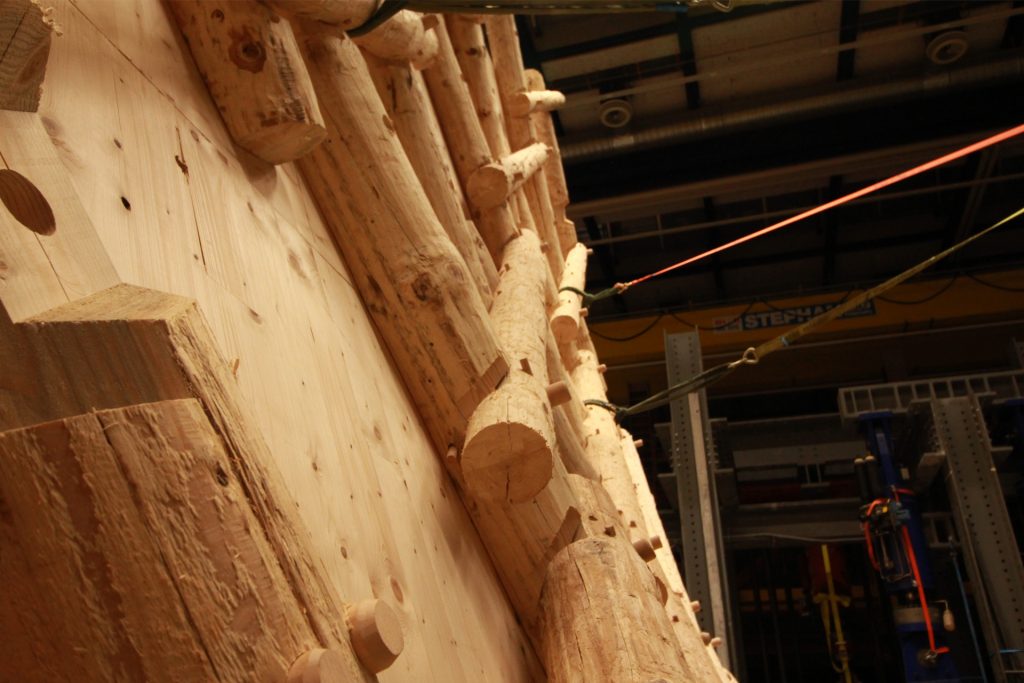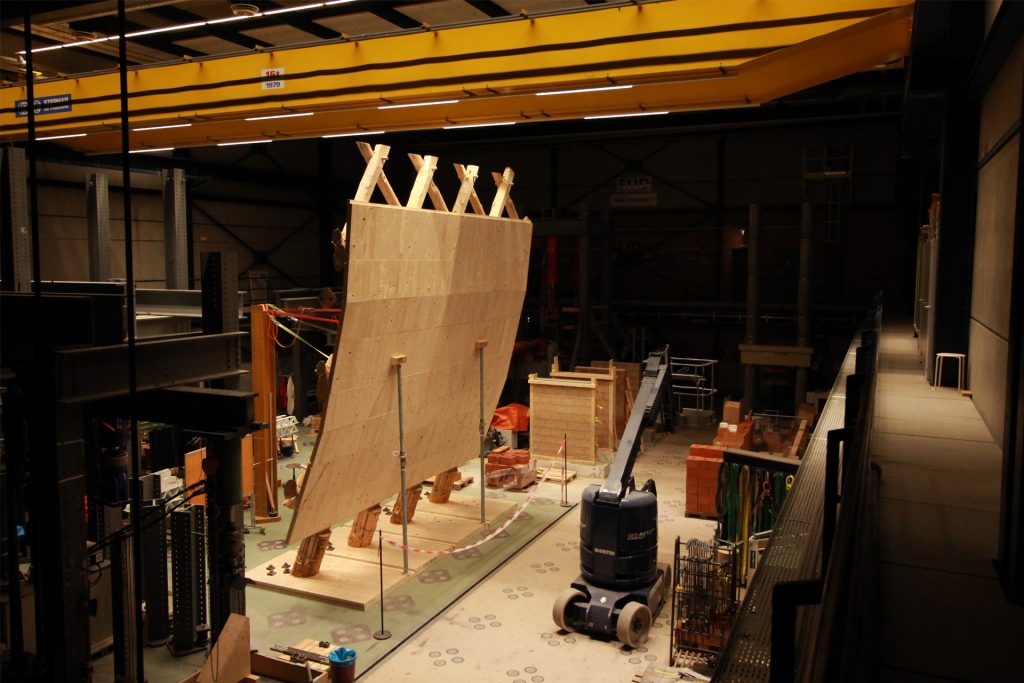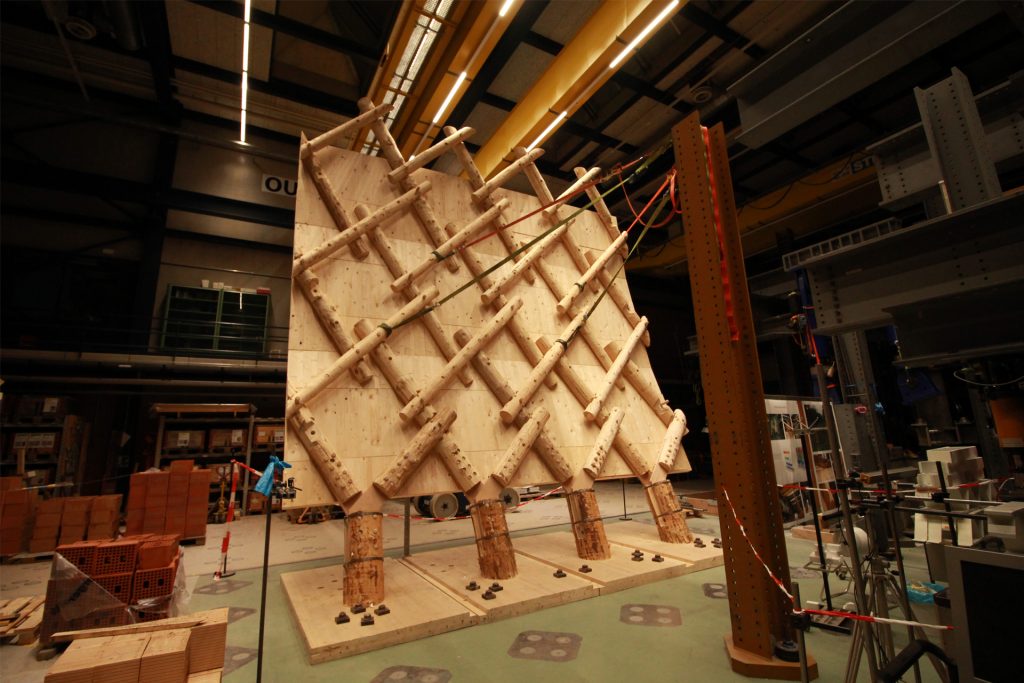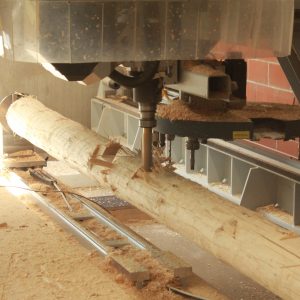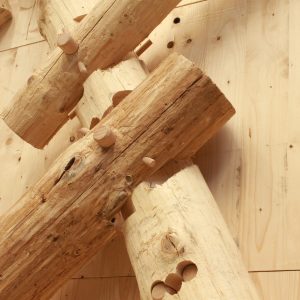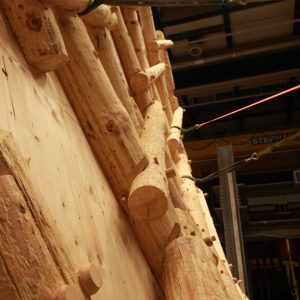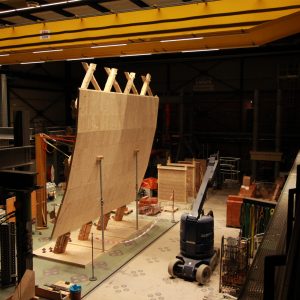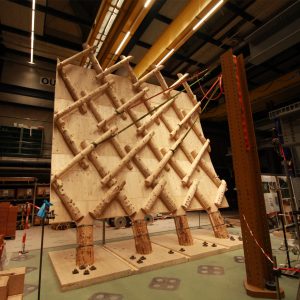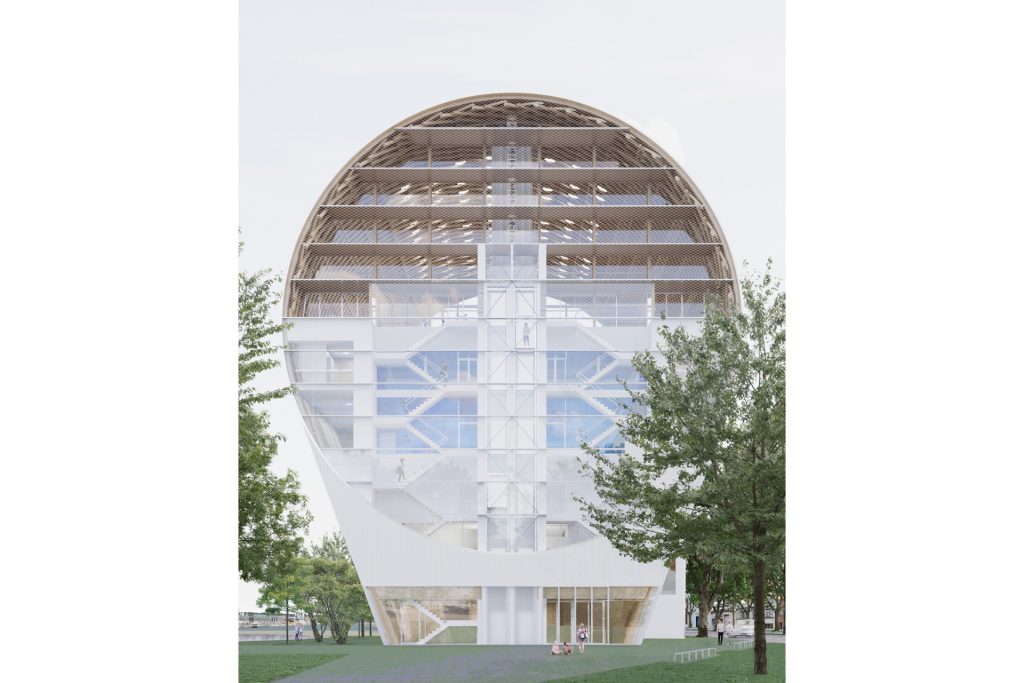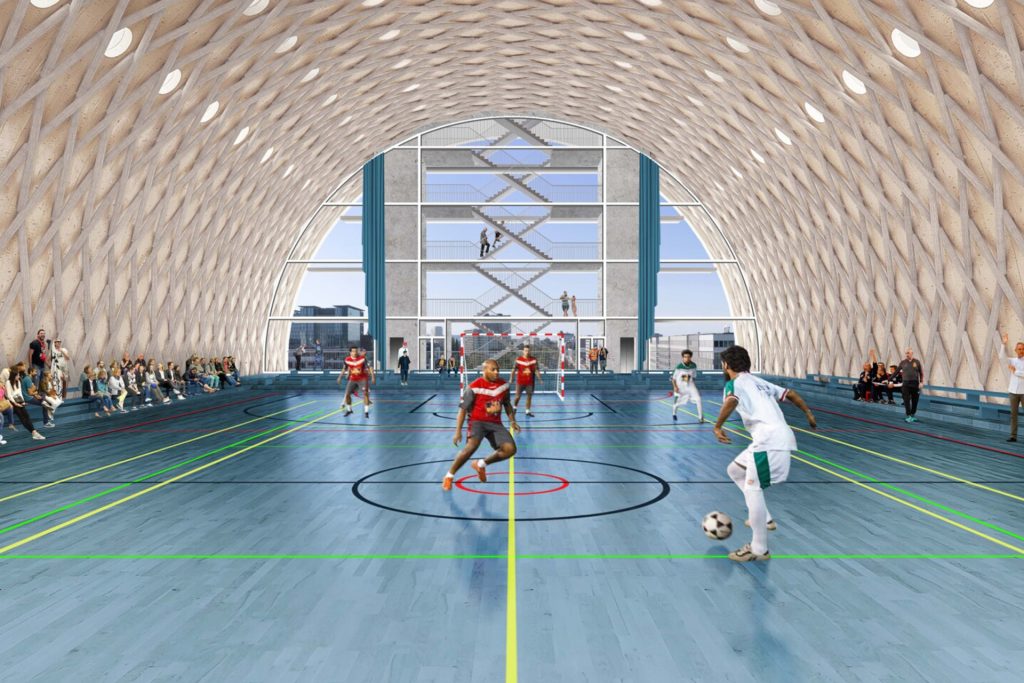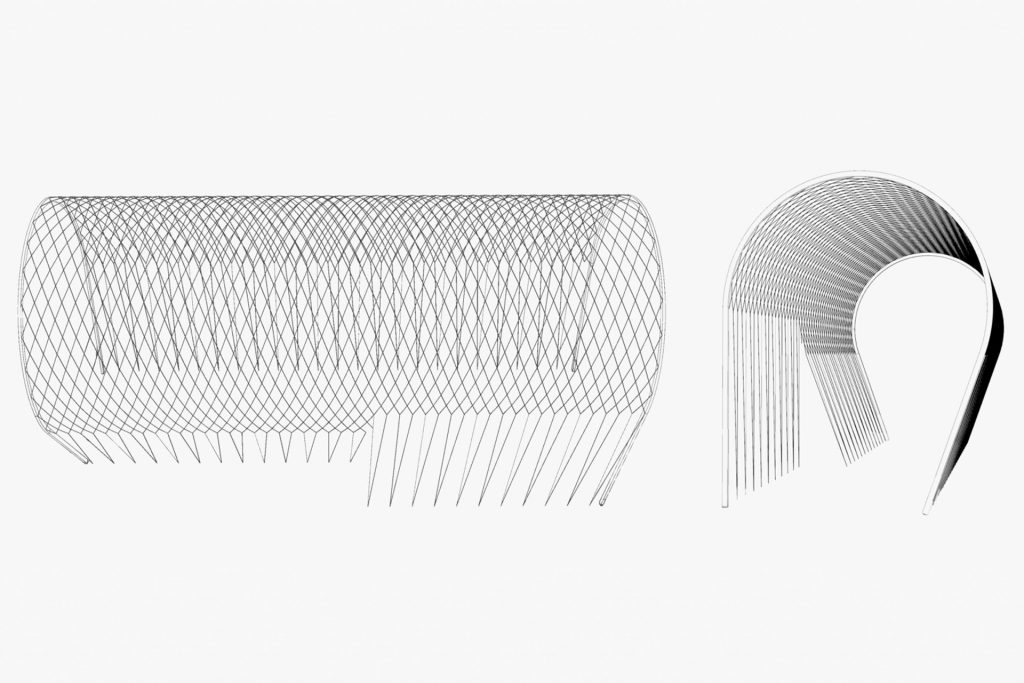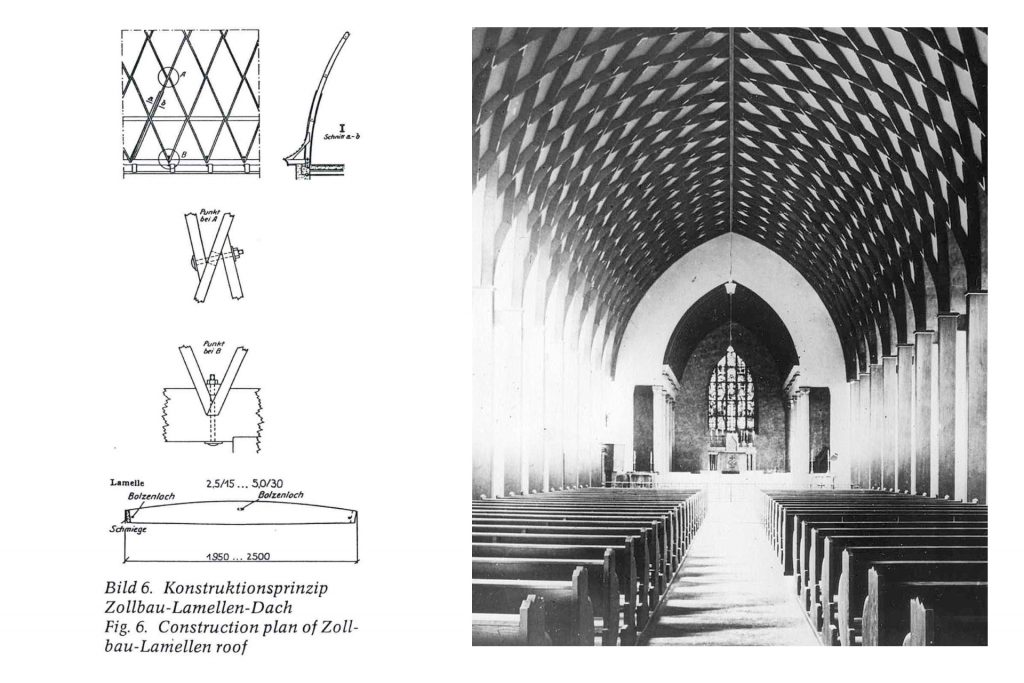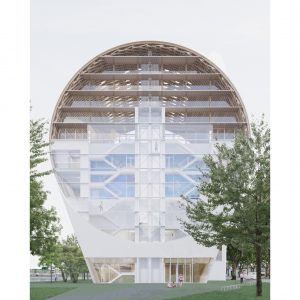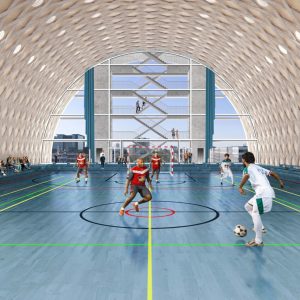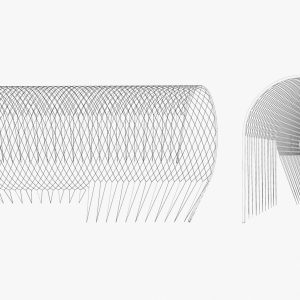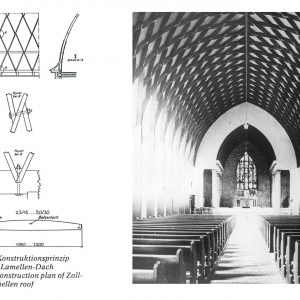Tour Sportive Bruxelles
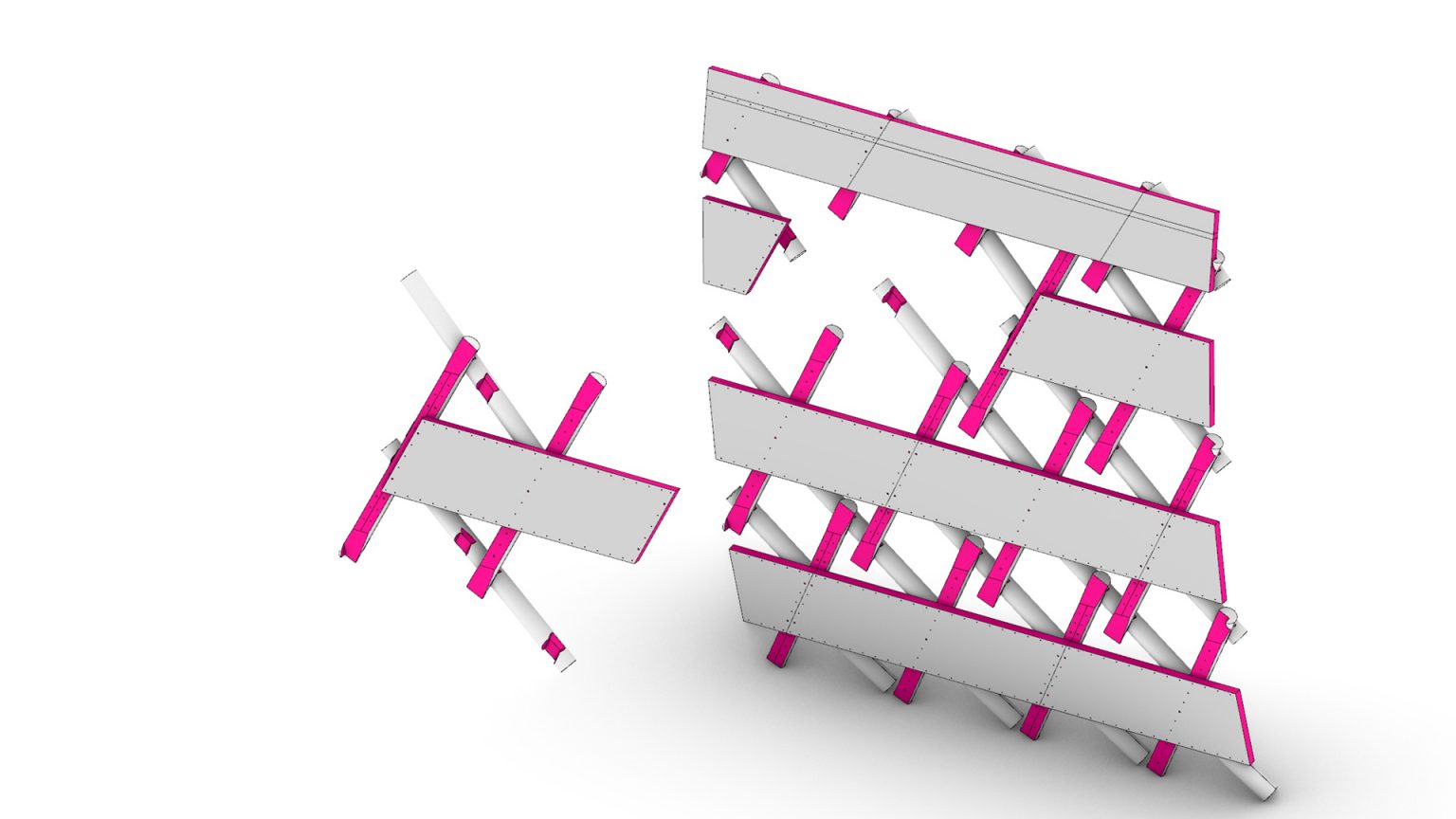
RESEARCH
The major innovation in this project is the adaptation of the Zollinger system to log construction. This construction principle, named after its inventor, engineer F. Zollinger, is based on the successive alternation of short elements to cover long spans. Each element is supported by two other elements at its ends, and itself supports two elements in the middle.
With cylindrical log the pieces cannot be assembled in the same plane, but rather overlap one another. The structure therefore consists of two distinct layers, one on the inside, the other on the outside, in direct contact with the roof. This doubling, as well as the application of wood-to-wood connections, implies a multiplication of joints and a large overlap of parts, which is not the case in the original system.
The first stage was based on the construction of scale models, which were used first to develop a module principle for the spatial development of the structure (scale model 1:10) and then specifically for the wood-wood connections (scale model 1:5), here made with 2 off-axis dowels acting as a “lock”, a type of joint that was not subsequently retained.
Assembly is the subject of a special study. As the structure is made up of modules, assembly is carried out from one element or group of elements to the next. Several variants were tested – 2, 3 or 9 modules – but for feasibility reasons, the 1:1 prototype opted for individual assembly. This assembly requires a slight rotation due to the interlocking of the joints, but also to the fact that the structure is composed of two layers of logs. When the parts fit together, one of the logs in the lower layer must pass under a log in the upper layer, and vice versa.
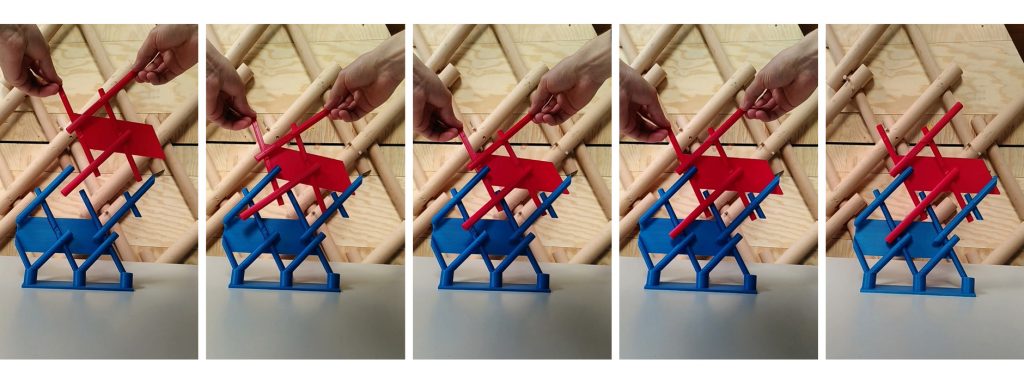
A section of the structure was made to scale 1:1. The wood used came from fir and spruce tops, 4.4 m long and between 15 and 25 cm in diameter, obtained free of charge as they were usually of low value. In addition to the debarking carried out in the sawmill, the trunks were again cleaned with a grinder to minimize wear on the tools used to work them.
Most of the machining was carried out on a 5-axis CNC (MAKA BC170) equipped with a lathe. This combination enables the logs to be machined over their entire surface, without any access problems and guaranteeing solid attachment to the support during machining. Cutting files are created using Grasshopper, a plug-in for McNeel’s Rhinoceros 7 software, as well as two other plug-ins developed by researchers at the IBOIS laboratory, Raccoon, and specifically by Dr Petras Vestartas, Compas Wood.
The production of this prototype proved the feasibility of hybrid log-CLT construction, and its application to a modified version of the Zollinger system. Working with roundwood proved highly reliable, with only two parts deemed unusable after machining. In a future development, a workflow could directly integrate the irregularity of each log to guarantee consistency in joints and make engineering calculations more systematic. Alternatively, a joint could be developed that is more resilient to the variations presented by a raw material such as roundwood.
PROJECT
The Sports Tower, a European mandate won in 2021 by the BEL architecten – CRIT. architecten – Bureau d’études Weinand consortium, is a public facilities project for the city of Brussels. With a broad curve in its cross-section, culminating at a height of 37 meters, the project takes the form of a large hall whose construction is inspired by the Zollinger system.
PROJECT DATA
Location: Brussels, Belgium
Client: Société d’aménagement urbain, SAU
Architect:
Bel Architects, Brussels
Crit Architects, Brussels
Yves Weinand Architectes, Lausanne
Structural engineering: Bureau d’Etude Weinand, Liège
Technological transfer: IBOIS EPFL, Prof. Yves Weinand, Dr Petras Vestartas, Phd candidate Damien Gilliard
